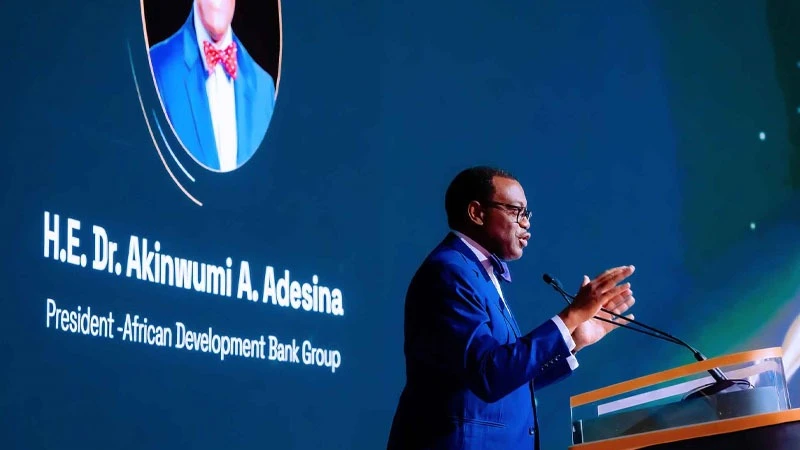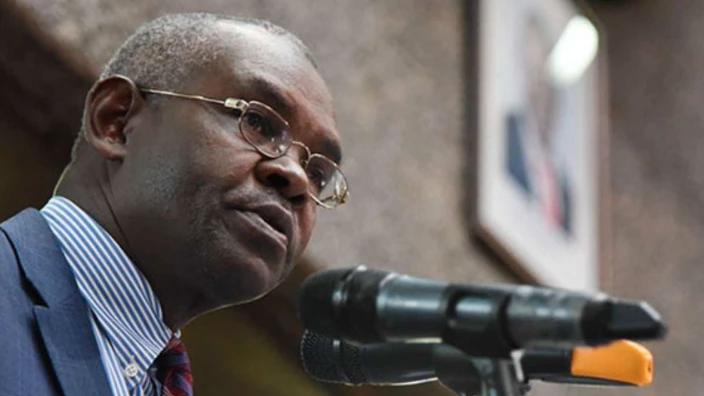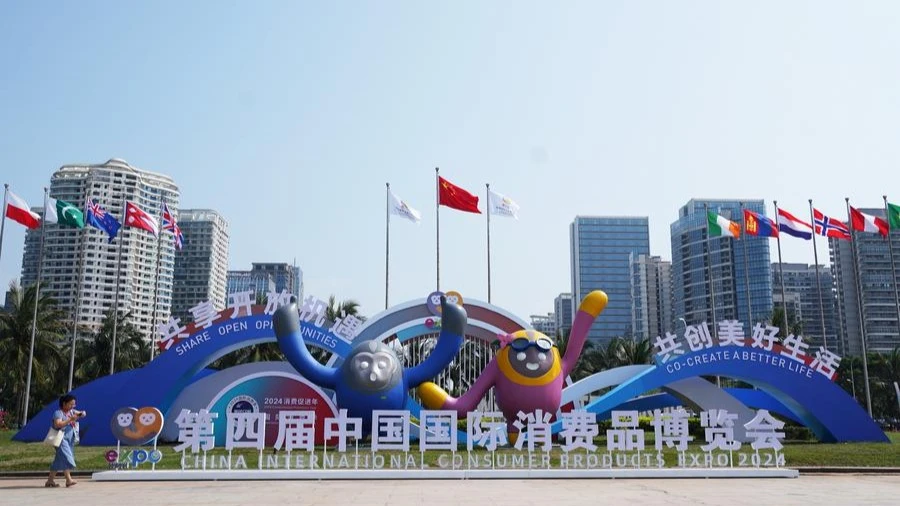Against the clock: Benjamin Mkapa stadium in overdrive to meet FIFA grade ‘A’ standards

HAVE you considered the implications of the Benjamin Mkapa Stadium not meeting FIFA grade 'A' standards? Tanzania is currently prohibited from hosting international FIFA-approved tournaments due to this shortfall. What are the potential consequences if the stadium isn't upgraded?
According to FIFA, countries must possess stadiums that meet FIFA grade 'A' standards to successfully organize international tournaments. These requirements apply regardless of whether the tournaments feature top-tier professional players or younger age groups.
In 2000, the late President Benjamin Mkapa pledged to construct an ultramodern FIFA-approved grade 'A' stadium before the end of his term in 2005. He deemed it disgraceful for the nation to lack a state-of-the-art stadium.
Construction began in July 2005 and was completed in June 2007, with the inauguration taking place in September 2007. Initially known as the Tanzania National Stadium, it was renamed in honor of President Mkapa 13 years later, following his passing.
Seventeen years later, people are questioning why the government accepted the stadium despite it not meeting FIFA's grade 'A' standard. Currently, the stadium is classified as FIFA grade 'B'.
Some are curious about who was responsible for the initial design, the oversight of the construction project, and the inspection that led to the government's acceptance of the stadium. They believe these recommendations were crucial in the decision-making process.
The stadium's construction was undertaken by the Chinese-based Beijing Construction Engineering Group (BCEG), which also won the tender to upgrade it. BCEG acknowledges that they constructed a FIFA grade 'B' stadium according to the government's specifications.
In an exclusive interview with The Guardian, Li Liang, BCEG's project manager, revealed that the initial designs were prepared by the China state-owned Beijing Institute of Architectural Design (BIAD), not by BCEG.
"When implementing government-funded projects, the contractor receives the design from the government and executes the work accordingly. We only applied for construction and carried out our tasks as per our contract," he explained.
On June 24, 2006, the Daily News, a government-owned newspaper, reported that Tanzania had invested 25bn/- in the construction of the National Stadium (now Benjamin Mkapa Stadium). The total project budget was US$56 million (equivalent to 64bn/- at that time).
So, what went wrong? Even the Confederation of African Football (CAF) delegation that inspected the stadium acknowledged it did not meet international standards, urging the government to upgrade it.
Milinde Mahona, the Stadium Manager, acknowledged CAF’s delegations, noting that the African football body typically dispatches a team of experts to inspect the stadium to ensure it meets the standards for its tournaments.
According to Mahona, these tournaments include the African Football League (AFL), the Africa Cup of Nations (AFCON), and the African Nations Championship (CHAN), scheduled for September this year.
The country’s FIFA Security Officer, Inspector Hashim Abdallah, and the Director of Information and Marketing of the Tanzania Football Federation (TFF), Boniface Wambura, who were part of the CAF audit team, have separately explained that their inspection audit report highlights various deficiencies.
These deficiencies include inadequate facilities for journalists, insufficient signage guiding attendees to their seats, lack of disability-friendly infrastructure, and the absence of metal detectors for weapons screening. Additionally, they noted that it was inappropriate for a public road to pass by the side of the stadium.
All of these issues are among the 89 FIFA criteria required to meet international standards, which should have been addressed when the stadium was officially handed over to the government on July 3, 2013.
Currently, Benjamin Mkapa Stadium is not operational, as the government has halted its use except for special requests for international and national matches, including those involving Azam, Simba, and Yanga.
To ensure the stadium resumes its primary function, the government decided to act on CAF’s recommendations. Consequently, BCEG was awarded a Sh31bn/- tender for the refurbishment of the stadium.
According to BCEG’s Liang, a grade ‘B’ status by FIFA standards meets the country's domestic needs. He adds, "Upon completion of the renovation, the Benjamin Mkapa Stadium will be upgraded to FIFA grade 'A' standards."
During the contract signing for the stadium improvements on July 27, 2023, then-Minister for Culture, Arts, and Sports, Dr. Pindi Chana, emphasized that the upgrades aim to meet FIFA’s standards.
"My call to BCEG is to ensure that this work adheres to the set standards and aligns with CAF and FIFA quality requirements, and is completed on time," Chana instructed.
Former Permanent Secretary to the Ministry of Culture, Arts, and Sports, Said Yakubu, explained that the upgrade would include improvements to players' changing rooms, the press conference room, the VIP area, all spectators' seats, the results display board, installation of a new IT system, the pitch, and two sets of goals.
Other areas to be refurbished include the seats for the technical bench and reserve players, electrical systems, lighting, the sewage system, running tracks for athletes, restaurants, and an additional room for the video assistant referee (VAR).
Wambura reports that a CAF inspection uncovered several defects in the stadium, notably the absence of a designated area for journalists and a lack of signs directing visitors to the platforms.
Wambura further identified several other deficiencies, including the lack of disability-friendly facilities, inadequate metal detection systems for stadium access, the ill-advised location of the stadium near a public road, and the unsafe practice of fans using vehicle gates as pedestrian entrances.
Reflecting on the construction timeline that began in 2004, Wambura recalls that in 2006, as President of the Association of Sports Journalists (TASWA), he had alerted authorities about the inadequate provisions for journalists. Despite assurances from Ministry of Sports officials that these concerns would be addressed, the problem persisted.
Wambura, who served as Chief Executive Officer of the Tanzania Premier League Board (TPLB) from June 2015 to October 2019, observes that upon completion, the project still lacked a dedicated space for journalists. Instead, journalists were relegated to a cramped corner at the bottom left of the main stage, mingling with spectators.
This arrangement is particularly problematic due to the absence of tables for journalists to work on and store their equipment. Wambura highlights that these shortcomings violate FIFA's guidelines, which require an internationally recognized stadium to include a designated area for journalists, positioned either above or below the VVIP platform, ensuring optimal visibility for observing on-field events.
The deficiencies noted by journalists in 2006 have resurfaced during the recent CAF inspection. CAF's position is clear: the designated area fails to meet journalists' needs, lacking appropriate workspace and sufficient room. Journalists cannot work effectively alongside fans, and the inadequate provision of tables and limited space further restrict their functionality.
The TFF official, a sports journalist by profession, points out that ongoing stadium upgrades have addressed CAF's concerns. The press platform has been relocated to the top right of the VVIP section, although not centrally as mandated by FIFA, and is now equipped with all necessary amenities.
On April 12th, our reporters visited the site to assess the field's progress. They found that the media platform, now fully equipped, had been completed. A clearly marked pathway leads to the conference room, allowing journalists to access the area without mingling with others in the field.
The improvements to the press platform at Benjamin Mkapa Stadium were implemented last October following CAF's directives, overseen by FIFA Security Officer Inspector Abdallah. These enhancements were crucial for the stadium to meet the standards required for hosting games in the new African Football League (AFL) competition.
Inspector Abdallah acknowledges that while the Benjamin Mkapa Stadium still falls short of international standards, it remains an essential venue for international matches due to the lack of alternative stadiums in the country.
Elizabeth John, Sports Correspondent for UHURU newspaper, shares her firsthand experience of the chaotic condition’s journalists face during games. She recounts incidents of broken phones, laptops, and cameras caused by enthusiastic fans during moments of peak excitement.
"As a writer, while capturing the action, sudden outbursts of celebration by fans can result in phones crashing to the ground and shattering. The same frenzy can lead to laptops and cameras being accidentally struck and damaged by zealous supporters. The environment, engulfed in noise and excitement, complicates the situation further," Elizabeth explains.
This is why Li Liang emphasizes that, as part of the stadium renovation contract with the government, they are dedicated to upgrading the new press platform to meet the standards set by CAF and FIFA.
On the other hand, Wambura underscores additional issues at the stadium, attributing them to administrative lapses. He explains, “We frequently encounter situations where someone with a roundabout ticket mistakenly heads toward the VIP entry gate. As a result, they are redirected and told, ‘Your ticket is for the roundabout; you must enter through the designated gate.’”
To be continued…….
UTILITIES
Construction facts of Benjamin Mkapa Stadium:
US$56 million,
The stadium construction cost, which
was equivalent to 64bn/- at that time
US$20 million
Funding from China for
the stadium construction
BIAD
The architect behind the stadium is
a Chinese government-owned firm
164
Workers on-board, comprising
150 Tanzanians and 14 Chinese
57,558
The current seating capacity of the stadium
260
Outdated stadium lights which are
to be replaced with 352 new lights
Top Headlines
© 2024 IPPMEDIA.COM. ALL RIGHTS RESERVED

























